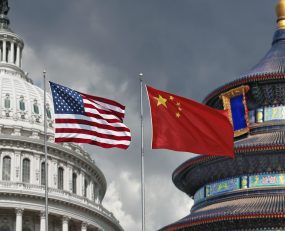
In March 2024, a group of senior US business leaders, including Raj Subramaniam of FedEx, met with Xi Jinping in the Great Hall of the People, Beijing. The meeting was part of a ‘charm offensive’ by the Chinese government which is attempting to build bridges with US investors after a period of troubled relations. The suspicion that the Chinese market has become hostile to US businesses has resulted in foreign investment falling by 8% in 2023.
The tone struck by the Chinese President was much more conciliatory than has been the case in the past. Reported by the Chinese media, Xi said, “The two countries’ respective success is an opportunity for each other. As long as both sides see each other as partners and show mutual respect, coexist in peace and cooperate for win-win results, China-US relations will get better.” Xi also expressed the hope that US businesses would participate in Belt and Road projects, previously almost exclusively reserved for Chinese enterprises.
The response of the US government to the meeting will be interesting. ‘China-bashing’ will be a key theme of the US presidential campaign with both candidates adopting a hawkish approach to trade with the country. US companies, meanwhile, seem much more willing to take a pragmatic and positive approach to the world’s second largest economy, which contributes 30% to world GDP growth. Whether Xi’s out-reach is a conscious effort to force a split between US government and business is a moot point, but it will certainly help dilute the calls for ‘decoupling’ coming from many on both sides of the US political divide.
Xi has certainly been adept at projecting Chinese economic power throughout the world by leveraging his country’s trade and investment resources. However, that is not to say that his Belt & Road Initiative is unchallenged, either domestically or abroad. Opposition in some countries to Chinese-backed projects is well documented, given that loans have to be repaid; Chinese companies are often the main beneficiaries of the investment and imported Chinese workers, rather than locals, are often employed. What is less well-reported is the pressure he is coming under to direct more investment to Chinese domestic projects, especially given that economic problems have resulted in a squeeze on capital. Therefore, foreign investment has certainly become more critical to his country’s development needs, providing another reason for the recent change in tone.
It is impossible to tell whether the meeting with US business leaders was driven by economic need, astute foreign policy or a combination of the two (most likely). What it does show is the way in which trade and politics have come to underpin the political narrative on both sides of the Pacific. Xi has become an unlikely proselytizer for free trade and globalization (although his critics would say that this is borne of self interest) whilst Biden/Trump are both promoting protectionist manifestos. This ideological transformation has not only fractured the Western consensus, but it now threatens to drive a wedge between globalist big business and populist politicians. This will not in any way displease Xi or his policy advisers.
Author: John Manners-Bell
Source: Ti Insight
Supply chain strategists can use GSCi – Ti’s online data platform – to identify opportunities for growth, support strategic decisions, help them stay abreast of industry trends and development, as well as understand future impacts on the industry.
Visit GSCI subscription to sign up today or contact Michael Clover for a free demonstration: [email protected] | +44 (0) 1666 519907